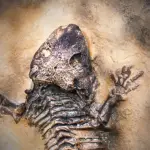A Halloween party, a biology lab, the doctor’s room, a coffin and a witch’s cupboard are all linked by a single common item. A skeleton!
The very word ‘skeleton’, is enough to send ripples of fear through ones spine and bones. Perceived by many as the major ingredient for sorcery, it indeed tickles me while I write this article to tell you that the skeleton is in fact one of the most important parts of the body.
Apart from having an entire song to remember its parts, the skeleton is that one basic body system that all biology students are sure to learn about in their syllabus.
Why do you ask? Well, read on to find out.
1. Teeth and the jaw bone.
Teeth though considered part of the skeletal system, is not categorized as a bone. It is protected by a layer of enamel that happens to be the strongest substance in the body. The jaws however, are made up of bones. While the upper jaw cannot be moved, the lower jaw can be moved up and down and are all fused together to form the mandibular component.
2. What makes up the skeleton?
While skeletons are associated with bones, the skeletal system as a whole can be thought to comprise of bones, tendons, ligaments and cartilage. The tendons, ligaments and cartilage provide protection against shocks and also help in movement and attachment of two or more bones.
3. Skeletal system of babies and adults.
The skeletal system as we know, is made up of 206 bones. This is not the same for babies. A baby is born with 300 bones. As the process of growth occurs, these bones join and fuse together to form a single one. Further, a process called ossification occurs that finally leaves behind 206 bones as part of the adult skeleton.
4. Skeletons give a lot of information about a person.
Skeletons are widely used for postmortem studies of a person. Anthropologists and Forensic doctors make use of skeletons to determine the age, sex, time of death and manner of death of an individual. A few broken or injured bones give doctors an insight as to how the person died helping them investigate in case of forensic studies.
5. Functions of the skeletal system.
The most obvious function of a skeleton is to provide a framework and support for the animal body. Apart from this, skeletons also acts a protective cover for many internal organs. The bones that constitute the skeletal system, play a major role in the formation of Red Blood Cells within their bone marrow. The skeleton along with its other components such as tendons, ligaments and cartilage also aid in movement.
6. How is the skeleton formed?
During fetal stages, the skeletal system simply comprises of fragile membranes and cartilages. As fetal growth occurs, membranes start forming which are later replaced by bones through a process called ossification. This acts as a basic skeleton to provide protection to the internal organs in the body. The process of bone growth continues even after the baby is born till early adulthood. The skull formation is continued and bones fuse together till finally a stage of complete skeleton comprising of 206 bones in the adult stage is reached.
7. Do all animals have skeletons?
Almost all animals have skeletons. While some animals like crabs have an outer skeleton called the exoskeleton, there exist other animals like jelly fish that do not have skeletons at all. These animals are called invertebrates.
8. The spinal cord.
The spinal column comprises of 33 bones that forms a structure called the vertebrae. They may be divided into regions such as Cervical, Thoracic, Lumbar, Sacral and Coccyx respectively.
9. Limb bones in human skeleton.
Bones of the limbic system are as follows:
Upper limb (Arm): Humerus, Radius, Ulna, Carpals, Metacarpals, Phalanges
Lower limb (Leg): Femur, Tibia, Fibula, Malleolus, Metatarsals
10. The skull.
The skull is the part of the skeletal system that protects the brain. It is also called the cranium or brain box.











Leave a Reply